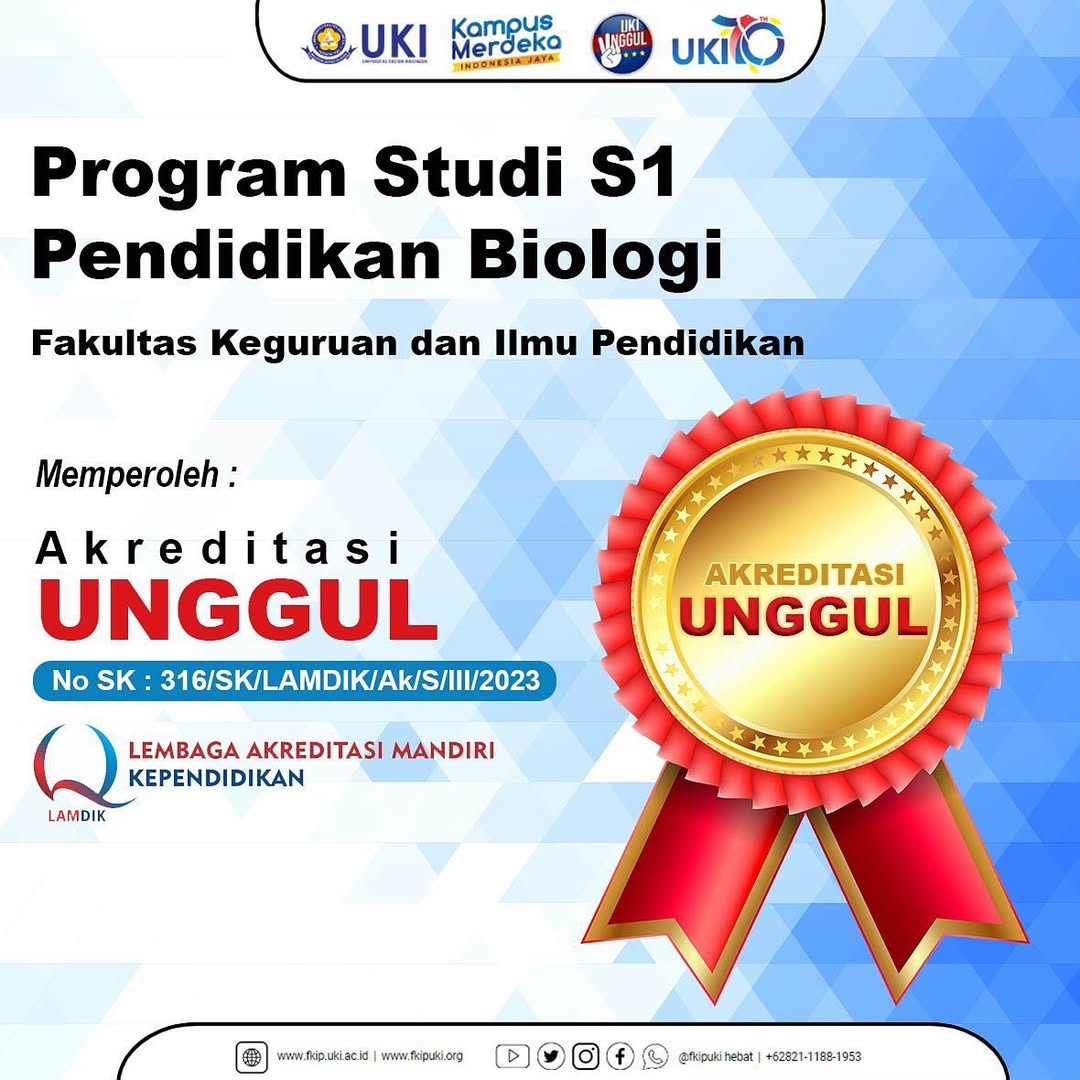Phyllanthus acidus (L.) Skeels (Pemanfaatan dan Bioaktivitasnya
DOI:
https://doi.org/10.33541/pro-life.v10i3.5143Abstract
Phyllanthus acidus (Phyllataceae) is an underutilized fruits tree (UFT) which has the potential to be developed both as food and traditional medicine. This study aims to explain botany, benefits and bioactivity of P. acidus. The research method is using online library research on Google Scholar using the keywords P. acidus, bioactivity and uses of P. acidus. Local Indonesian people have long been cultivating P. acidus in their yards which are used as food, vegetables and traditional medicine, but on the other hand they contain toxic compounds known as Dichapetalins. The fruits of P. acidus has sour taste, not broken, juicy, 1 cm in diameter, 6-8 lobes, angular, enlarged fruit, hard endocarp. The P. acidus fruit is traditionally used to treat various diseases such as inflammation, rheumatism, bronchitis, asthma, respiratory disorders, liver disease, gastric disorders and diabetes. The use of P. acidus as a traditional medicine is related to its bioactivity as an antioxidant, anti-diabetes mellitus, anti-microbial, hepatoprotective, analgesic, anti-cancer, and diuretic. The toxic dichapetalins cause adverse health effects in higher doses so their use needs to be strictly controlled.
References
Abd Ghafar, S.Z., Mediani, A., Ramli, N.S., & Abas, F. (2018). Antioxidant, α-glucosidase, and nitric oxide inhibitory activities of Phyllanthus acidus and LC–MS/MS profile of the active extract. Food Bioscience, 25, 134-140.
Abd Ghafar, S.Z., Mediani, A., Maulidiani, M., Rudiyanto, R., Ghazali, H.M., Ramli, N.S., & Abas, F. (2020). Complementary NMR-and MS-based metabolomics approaches reveal the correlations of phytochemicals and biological activities in Phyllanthus acidus leaf extracts. Food Research International, 136, 109312.
Anggraeni, A. 2022. Teknik Budidaya Underutilized Fruit Trees (Ufts) Dan Analisis Perubahan Vegetasi Di Kampung Urug, Jawa Barat. Tesis. Fakultas Matematika Dan Ilmu Pengetahuan Alam. Universitas Indonesia, Depok. 137 p.
Binita, S., Ajoy, B., Phukan, S., & Singha, B. (2016). Hypolipidemic activity of Phyllanthus acidus leaves in hypercholesterolemic diet-induced hyperlipidemia in rats. Scholars Journal of Applied Medical Sciences (SJAMS), 4(10B), 3648-53.
Chakraborty, R., Biplab, D., Devanna, N., & Sen, S. (2012). Antiinflammatory, antinociceptive and antioxidant activities of Phyllanthus acidus L. extracts. Asian Pacific Journal of Tropical Biomedicine, 2(2), S953-S961.
Chongsa, W., Radenahmad, N., & Jansakul, C. (2014). Six weeks oral gavage of a Phyllanthus acidus leaf water extract decreased visceral fat, the serum lipid profile and liver lipid accumulation in middle-aged male rats. Journal of Ethnopharmacology, 155(1), 396-404.
Chongsa, W., Kanokwiroon, K., & Jansakul, C. (2015). Effects of 6 weeks oral administration of Phyllanthus acidus leaf water extract on the vascular functions of middle-aged male rats. Journal of Ethnopharmacology, 176, 79-89.
Duong, T.H., Trung, N.T., Phan, C.T.D., Nguyen, V.D., Nguyen, H.C., Dao, T.B.N., ... & Sichaem, J. (2022). A new diterpenoid from the leaves of Phyllanthus acidus. Natural Product Research, 36(2), 539-545.
Geng, H.C., Zhu, H.T., Yang, W.N., Wang, D., Yang, C.R., & Zhang, Y.J. (2021). New cytotoxic dichapetalins in the leaves of Phyllanthus acidus: identification, quantitative analysis, and preliminary toxicity assessment. Bioorganic Chemistry, 114, 105125.
Geng, H.C., Zhu, H.T., Wang, D., Yang, W.N., Yang, C.R., & Zhang, Y. J. (2021b). Phyllanacidins A–C, three new cleistanthane diterpenoids from Phyllanthus acidus and their cytotoxicities. Fitoterapia, 148, 104793.
Hossen, M.J., Jeon, S.H., Kim, S.C., Kim, J.H., Jeong, D., Sung, N.Y., ... & Cho, J.Y. (2015). In vitro and in vivo anti-inflammatory activity of Phyllanthus acidus methanolic extract. Journal of Ethnopharmacology, 168, 217-228.
Hossain, M.S., Akter, S., Das, A., & Sarwar, M. S. (2016). CNS depressant, antidiarrheal and antipyretic activities of ethanolic leaf extract of Phyllanthus acidus L. on Swiss Albino Mice. British Journal of Pharmaceutical Research, 10(5), 1.
Hossain, M.S., Akter, S., Begum, Y., & Bulbul, I. J. (2016b). Analgesic and anti-inflammatory activities of ethanolic leaf extract of Phyllanthus acidus L. on swiss Albino mice. European Journal of Medicinal Plants, 13(1), 1.
https://powo.science.kew.org/taxon/urn:lsid:ipni.org:names:194610-2 retrived January, 24, 2023
Kuttan, R., & Harikumar, K.B. (Eds.). (2011). Phyllanthus species: scientific evaluation and medicinal applications. CRC Press.
Jain, N.K., & Singhai, A.K. (2011). Protective effects of Phyllanthus acidus (L.) Skeels leaf extracts on acetaminophen and thioacetamide induced hepatic injuries in Wistar rats. Asian Pacific Journal of Tropical Medicine, 4(6), 470-474.
Leeya, Y., Mulvany, M. J., Queiroz, E.F., Marston, A., Hostettmann, K., & Jansakul, C. (2010). Hypotensive activity of an n-butanol extract and their purified compounds from leaves of Phyllanthus acidus (L.) Skeels in rats. European journal of pharmacology, 649(1-3), 301-313.
Nguyen, T.T.K., Laosinwattana, C., Teerarak, M., & Pilasombut, K. (2017). Potential antioxidant and lipid peroxidation inhibition of Phyllanthus acidus leaf extract in minced pork. Asian-Australasian Journal of Animal Sciences, 30(9), 1323-1331.
Nurfadhilah, D., Yuandani, Y., & Hasibuan, P.A.Z. (2022). Immunomodulatory effects of cermai leaves (Phyllanthus acidus (L.) Skeels) ethanol extract on normal male rats and cyclophosphamide induction. Open Access Macedonian Journal of Medical Sciences, 10(A), 782-787.
Pangestika, A.R., Widodo, E., & Sudjarwo, E. (2020). Evaluation of gooseberry (Phyllanthus acidus L. Skeels) leaf extract based on phytochemical, total flavonoid, and antibacterial activity as potential feed additive in broiler. International Research Journal of Advanced Engineering and Science, 5(4), 305-307.
Seebaluck-Sandoram, R., Lall, N., Fibrich, B., van Staden, A.B., Saleem, H., & Mahomoodally, M.F. (2019). Antimicrobial, antioxidant and cytotoxic evaluation of two underutilised food plants: Averrhoa bilimbi L.(Oxalidaceae) and Phyllanthus acidus L. Skeels (Phyllanthaceae). Biocatalysis and Agricultural Biotechnology, 18, 100998.
Talubmook, C., & Buddhakala, N. (2013). Hypoglycemic and hypolipidemic properties of leaf extracts from Phyllanthus acidus (L.) Skeels., Leucaena leucocephala (Lam.) de Wit. and Psidium guajava (L.) in streptozotocin-induced diabetic rats. GSTF Journal of BioSciences, 2(2).
Tan, S.P., Tan, E.N.Y., Lim, Q.Y., & Nafiah, M.A. (2020). Phyllanthus acidus (L.) Skeels: A review of its traditional uses, phytochemistry, and pharmacological properties. Journal of Ethnopharmacology, 253, 112610.
Tharakan, S.T. (2011). Taxonomy of the genus Phyllanthus. Phyllanthus species: scientific evaluation and medicinal applications, GRC Press: 23-36.
Tram, N.C.T., & Cuong, N.M. (2016). Kaempferol and kaempferol glycosides from Phyllanthus acidus leaves. Vietnam Journal of Chemistry, 54(6), 790-790.
Tram, N.C.T., Thi Nga, N., Phuong, V.T.T., Thi Cuc, N., Do Phuong, T., Truan, G., ... & Do Thao, T. (2017). The hepatoprotective activity of a new derivative kaempferol glycoside from the leaves of Vietnamese Phyllanthus acidus (L.) Skeels. Medicinal Chemistry Research, 26(9), 2057-2064.
Vikasari, S.N., Sukandar, E.Y., Sutjiatmo, A.B., & Riyanti, S. (2005). Diuretic effect of the ethanol extracts of Phyllanthus acidus l (skeels) leaves in wistar rats. Int J Pharm Pharm Sci, 7(1), 120-3.
Yuan, Y.R., Li, Y.W., Huang, Y.Q., Liu, Q.F., Ren, Y.H., Yue, J.M., & Zhou, B. (2021). Four new diterpenoids from the twigs and leaves of Phyllanthus acidus. Tetrahedron, 91, 132224.
Wahab, O.M. (2019). Taxonomic Revision of The Genus Phyllanthus Linn. In Nigeria (Doctoral Dissertation). A Thesis In The Department Of Botany. University Of Ibadan.










.svg_.png)













